Have you ever heard of Qingtuan? This traditional Chinese snack may not be as well-known as other popular sweet snacks, but it holds a special place in the hearts of many. With its vibrant green color and unique ingredients, qingtuan has captured the attention of Asian food lovers worldwide. Today, I am here to introduce you to the world of qingtuan to explore its history, ingredients, cultural significance, and so much more. With just a few ingredients and simple steps, you can make qingtuan in the comfort of your home. Read on for more!
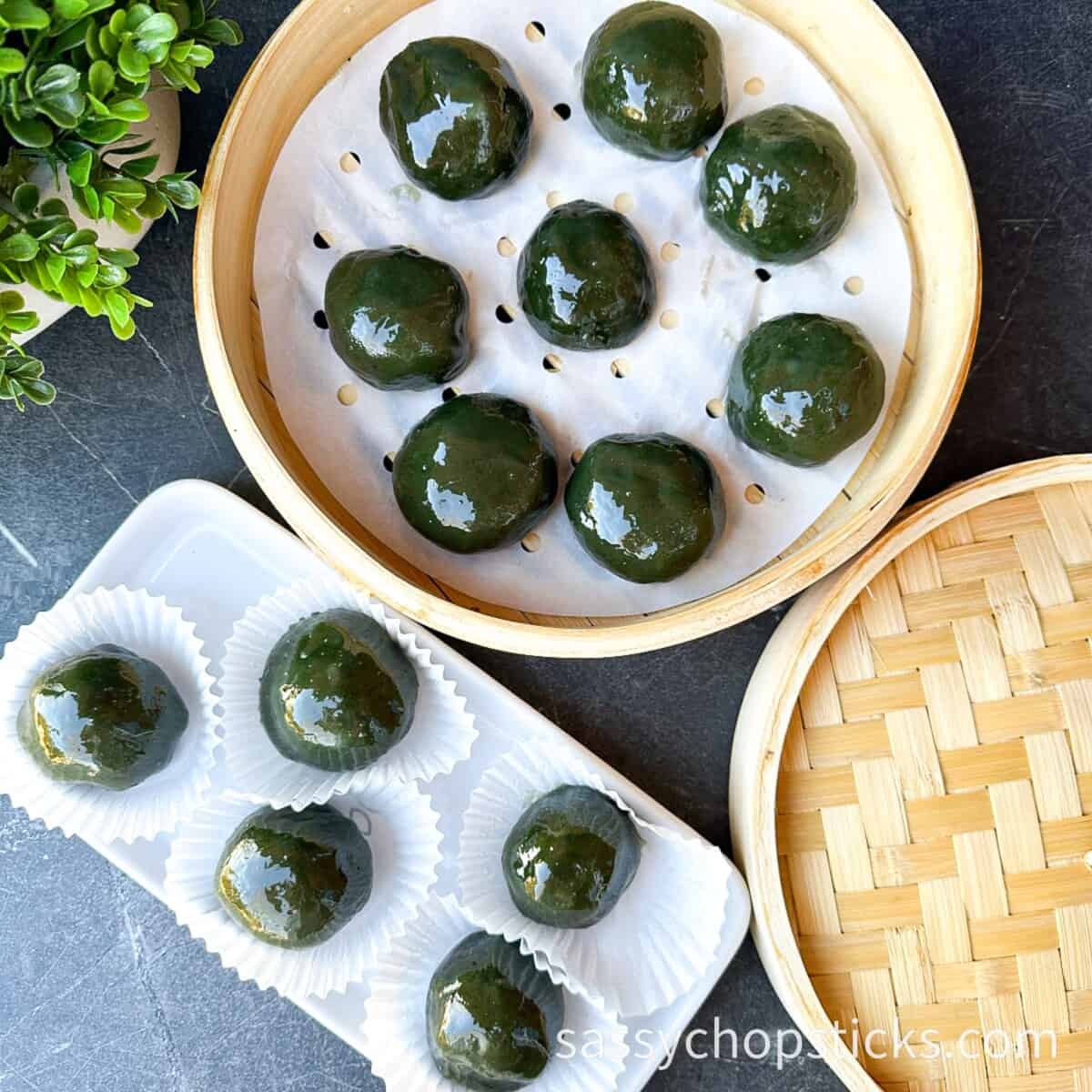
Jump To
What is Qingtuan?
Qingtuan is a traditional Chinese snack made from sticky rice four, rice flour, mugwort, different fillings, and a few other ingredients. The star ingredient is mugwort, a green vegetable called Chinese mugwort (Artemisia argyi); sometimes, people add gardenia fruit or other green food coloring to achieve the green color. The mixture is then formed into a dough, often filled with nuts or sweet bean paste, and shaped into rice balls or cylinders before being steamed.
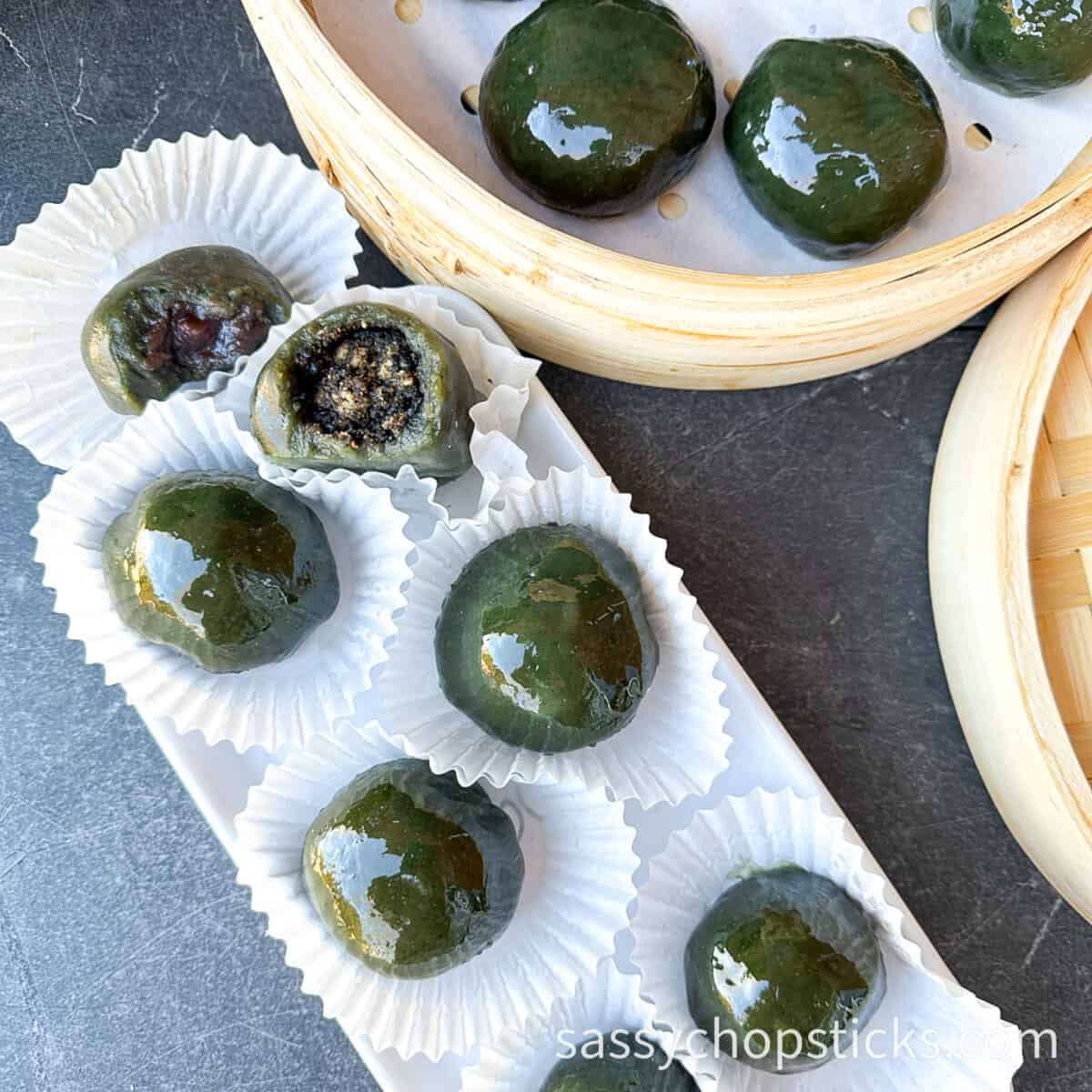
As the arrival of early spring approaches, the Qingming Festival, also known as Tomb-Sweeping Day, takes center stage in the hearts of all Chinese people. This special day typically falls in early spring. It has ancient roots dating back to the Zhou Dynasty, in the middle of customs that honor ancestors and relishes the revitalizing effects of nature.
Qingtuan is a popular seasonal snack enjoyed during the Qingming Festival. Nowadays, Qingtuan has become a very popular picnic snack or simply a snack for most Chinese people. The history of qingtuan is steeped in culture and symbolism, and each region has its own unique variations.
Ingredients
For the dough:
Glutinous rice flour: The mainstay of Qingtuan, providing a chewy and sticky texture.

Rice flour: Rice flour is naturally gluten-free; it balances the sticky rice's stickiness and provides a soft texture to qingtuan.
Sugar: It adds sweetness to the wrappers.
Mugwort powder: It adds a distinct green color and earthy flavor to Qingtuan. Mugwort is an herbaceous plant often used in Asian cuisine for its aromatic qualities. You can also use fresh mugwort leaves or mugwort juice.
Cornstarch: It acts as a thickening agent, helping to bind the ingredients together and create a smoother texture.
Lard: Lard contributes moisture content to Qingtuan and prevents it from becoming too sticky. If you don't have lard in hand, you can also substitute it with oil.
Hot water: Hot water hydrate and bind the ingredients together. It helps to activate the cornstarch. Additionally, hot water can help to dissolve the sugar and distribute its sweetness evenly throughout the mixture.
Roasted black sesame seed and peanut filling: To make sesame and peanut filling, you can simply add sesame seeds, peanuts, and sugar together into a grinder and grind until powder forms. Then, add lard to the powder mixture. Now you have a freshly made paste!
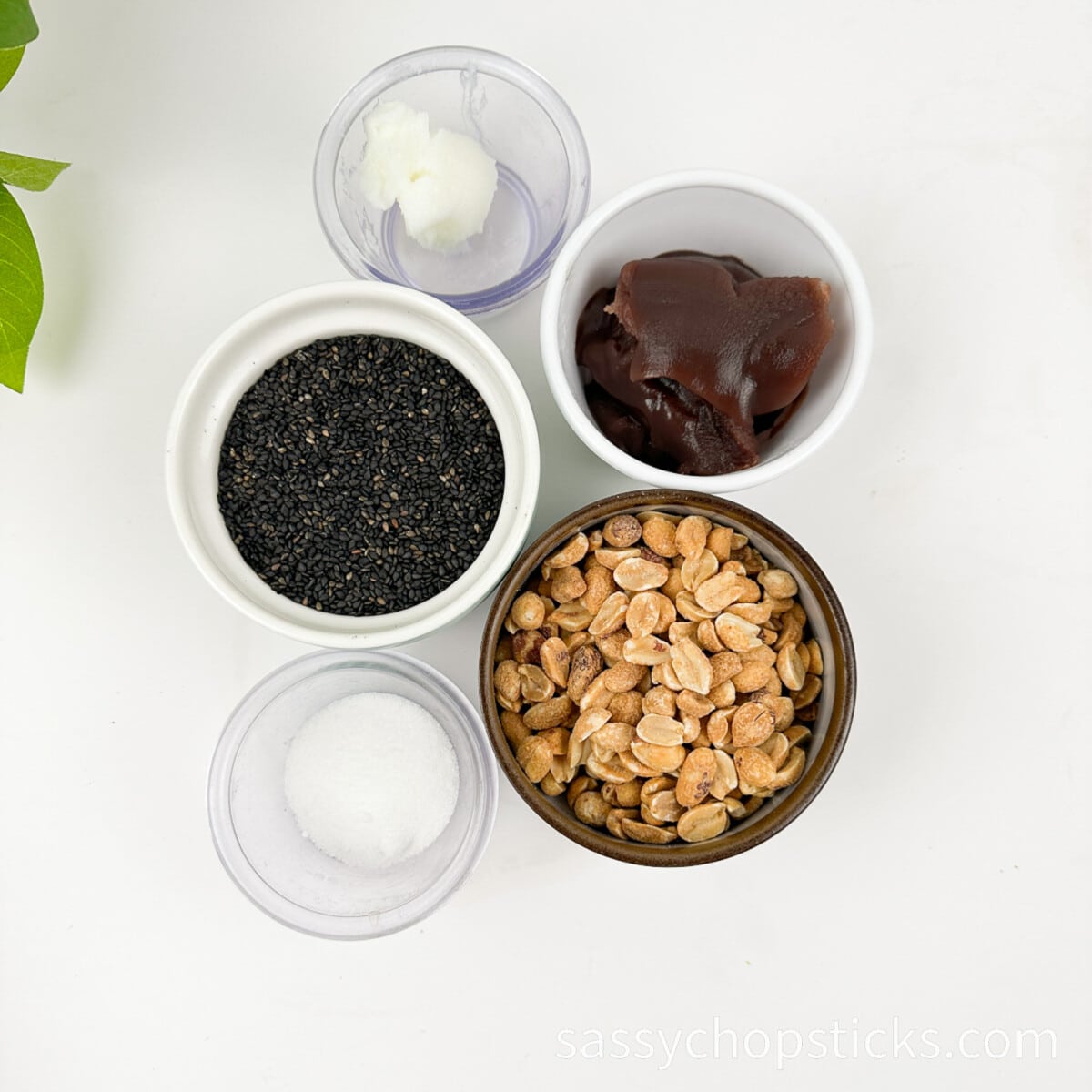
Red bean paste filling: You can use it from store-bought or homemade red bean paste.
How to assemble Qingtuan step by step?
Make the Dough:
- In a mixing bowl, combine the glutinous rice flour, rice flour, cornstarch, sugar, and mugwort powder.
- Gradually add hot water to the mixture while stirring continuously until a smooth dough forms.
- Knead the lard into the dough for a few minutes until it becomes elastic and pliable.

Form the Qingtuan:
- Divide the dough into small portions and roll them into round balls.
- Flatten each ball into a disc shape with your palm, making a small well in the center for the filling.
Add the Filling:
- Place a small amount of sesame peanut filling or sweet red bean paste (about 1 teaspoon) onto the center of each dough disc.
Shape the Qingtuan:
- Carefully seal the edges of the dough around the filling, ensuring it's completely enclosed.
- Roll the filled dough between your palms to form a smooth ball shape.
Steam the Qingtuan:
- Arrange the qingtuan on a bamboo steamer lined with parchment paper, leaving some space between each piece to prevent sticking.
- Steam over high heat for 15-20 minutes until the qingtuan is cooked and slightly translucent.
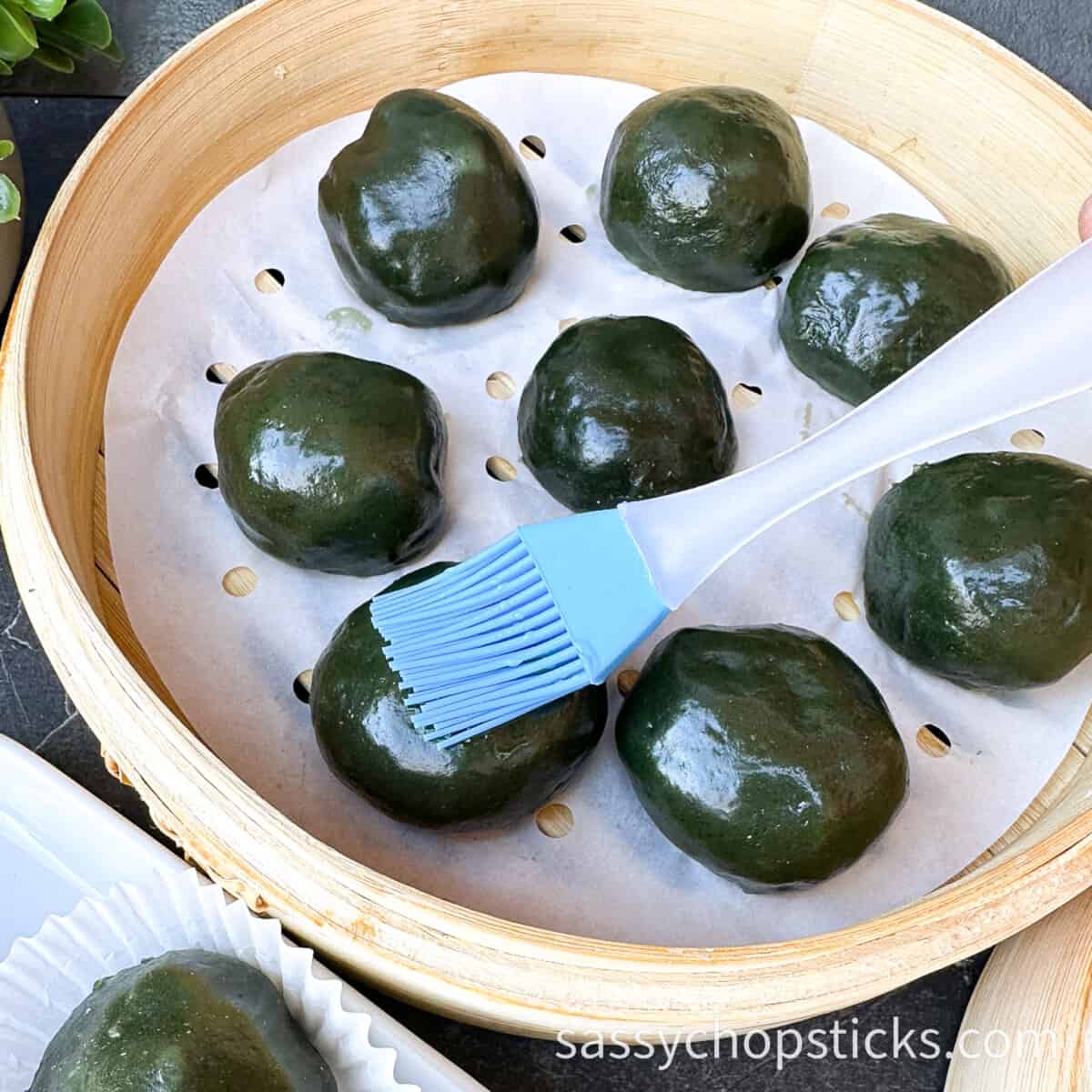
Serve: Once cooked, remove the qingtuan from the steamer and gently brush on a layer of oil. The oil keeps them from drying out and breaking. Enjoy!
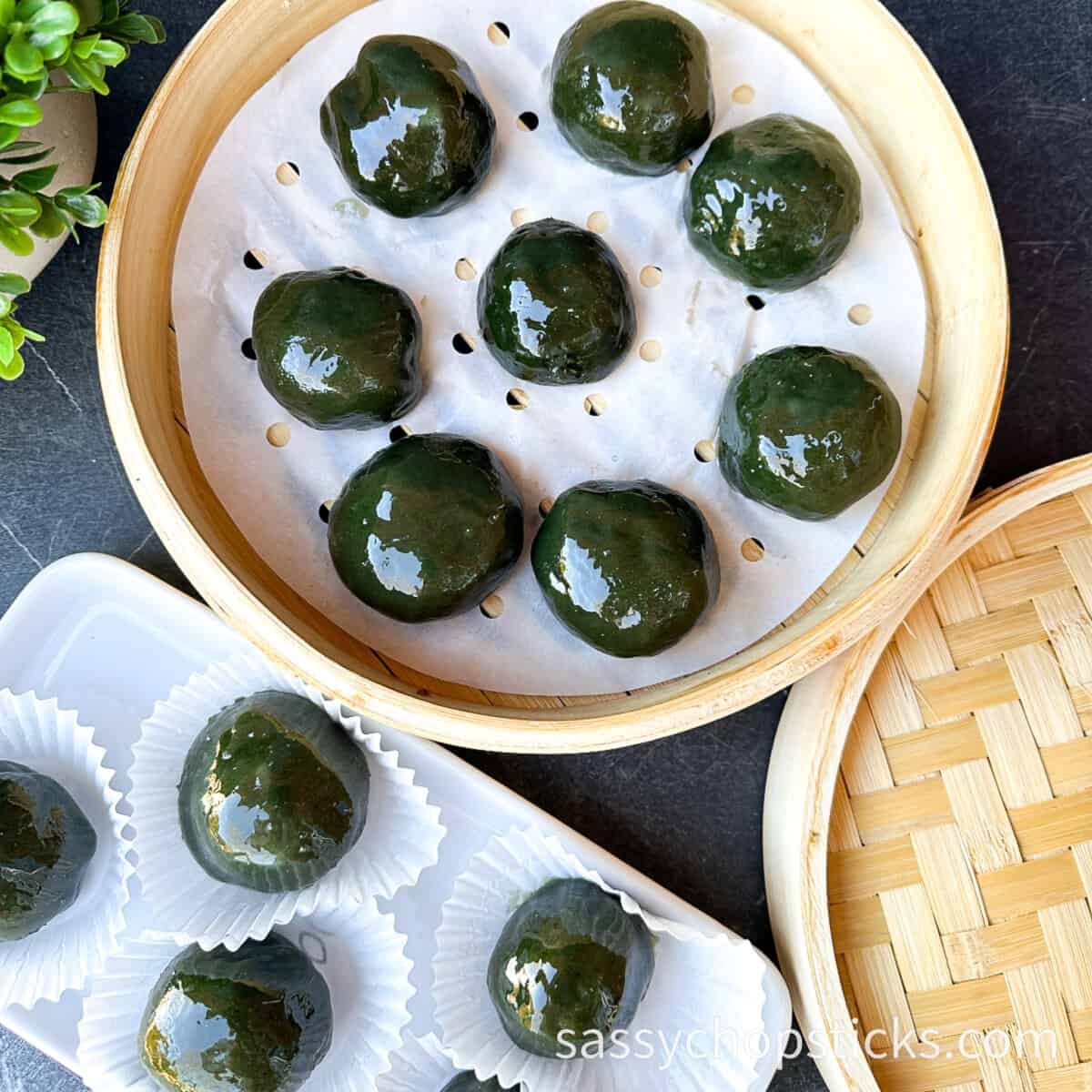
Feel free to adjust the filling or experiment with different variations to suit your taste preferences!
Variations of qingtuan
In recent years, Qing tuan has experienced a revival, with innovative twists and new flavors captivating the taste buds of the younger generation. From black sesame paste and duck egg yolk to savory versions featuring seasonal vegetables and black truffle, the traditional snack has undergone a delightful metamorphosis.
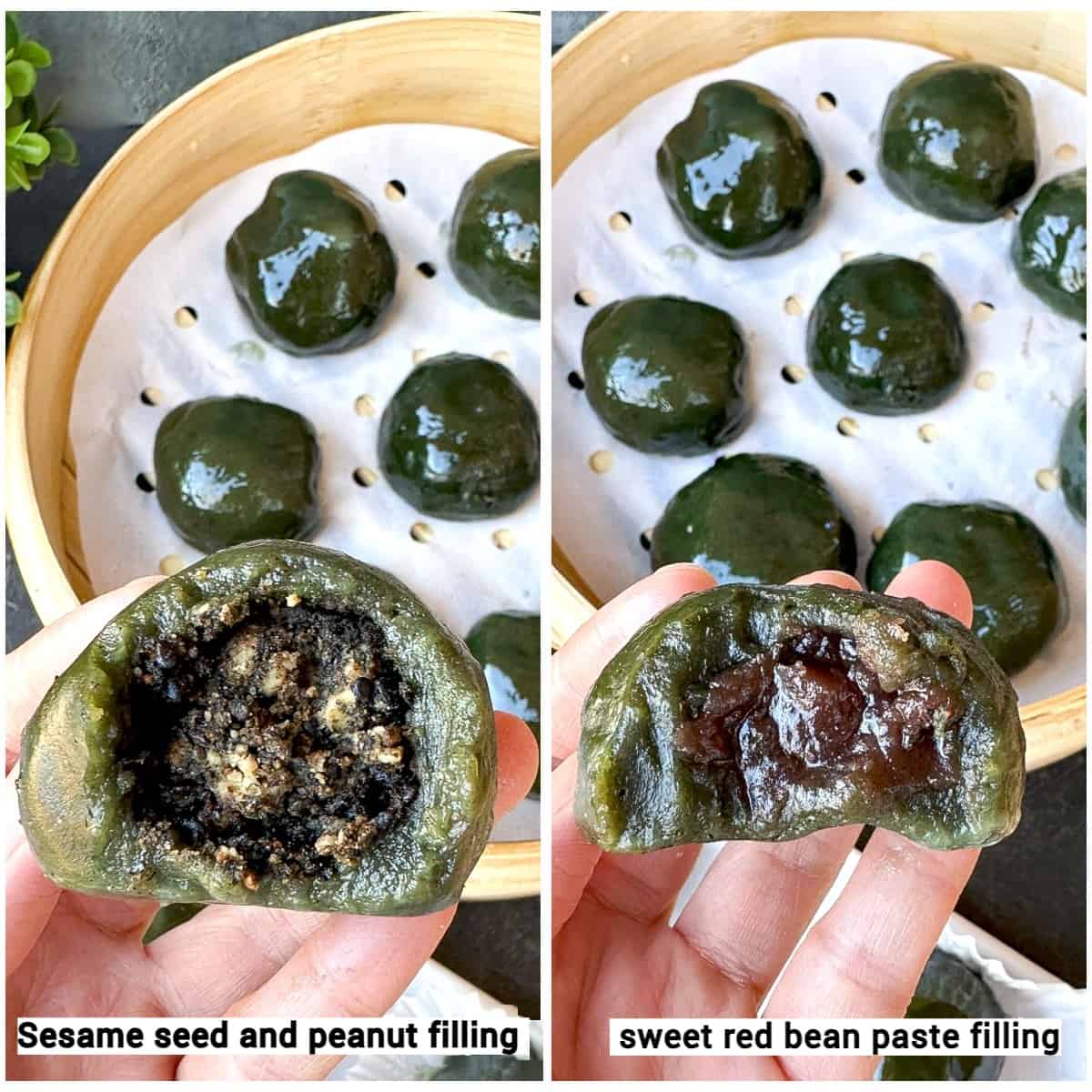
There are several variations of qingtuan based on regional preferences and ingredients. Some common types include:
Traditional Qingtuan: This recipe is the typical type of traditional Qingtuan, mainly made with glutinous rice and mugwort, giving it a distinctive green color. It's filled with nuts or red bean paste.
Modern Qingtuan: This version might use food colorings or natural green ingredients like spinach or matcha powder instead of mugwort for coloring. The savory version filling can vary, including meat, pork floss, or vegetables.
Qingtuan with jujube paste: Some versions feature a filling made from jujube paste, which provides a sweet and slightly tangy flavor.
Qingtuan with sweet osmanthus paste: This type of qingtuan is filled with a paste made from sweet osmanthus flowers, lending a fragrant and floral taste.
Duck egg yolk filling: Some people use salted duck egg yolks to fill qingtuan. The yolks are usually preserved in salt or brine for several weeks to develop their distinctive flavor. A small amount of the duck egg yolk filling is placed in the center of each dumpling wrapper before it is sealed and shaped into a ball. The salted duck egg yolk filling adds a rich and savory flavor to the qingtuan dumplings,
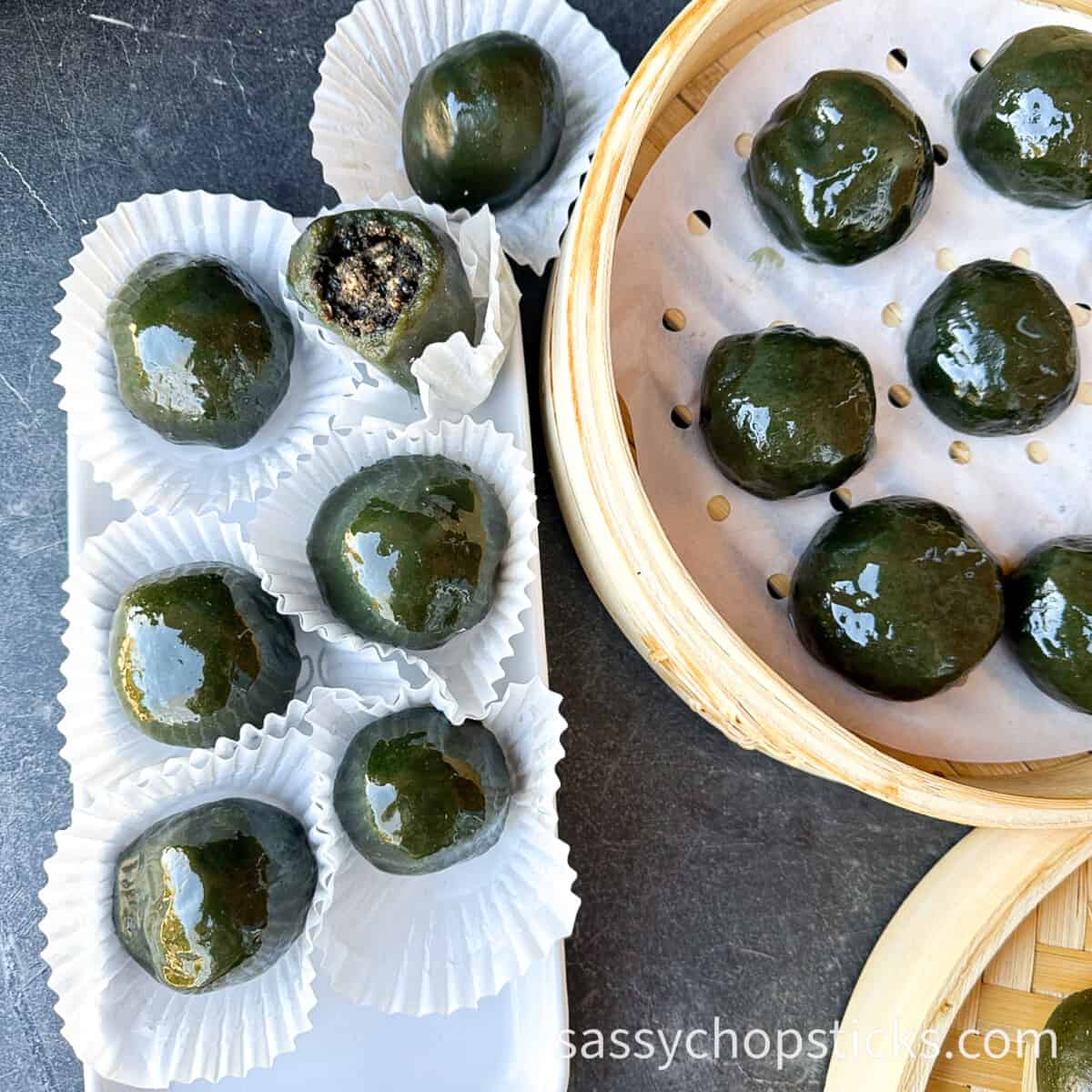
These are just a few examples, and other regional variations of qingtuan may be available.
Storing Qingtuan
Allow the qingtuan to cool completely to room temperature before storing them. Wrap them individually with plastic wrap, then transfer the cooled qingtuan to an air-tight container. Store the qingtuan in the refrigerator if you plan to consume them within a few days. If you want to store qingtuan longer, you can also freeze them. Frozen qingtuan can be stored for several weeks to a few months.
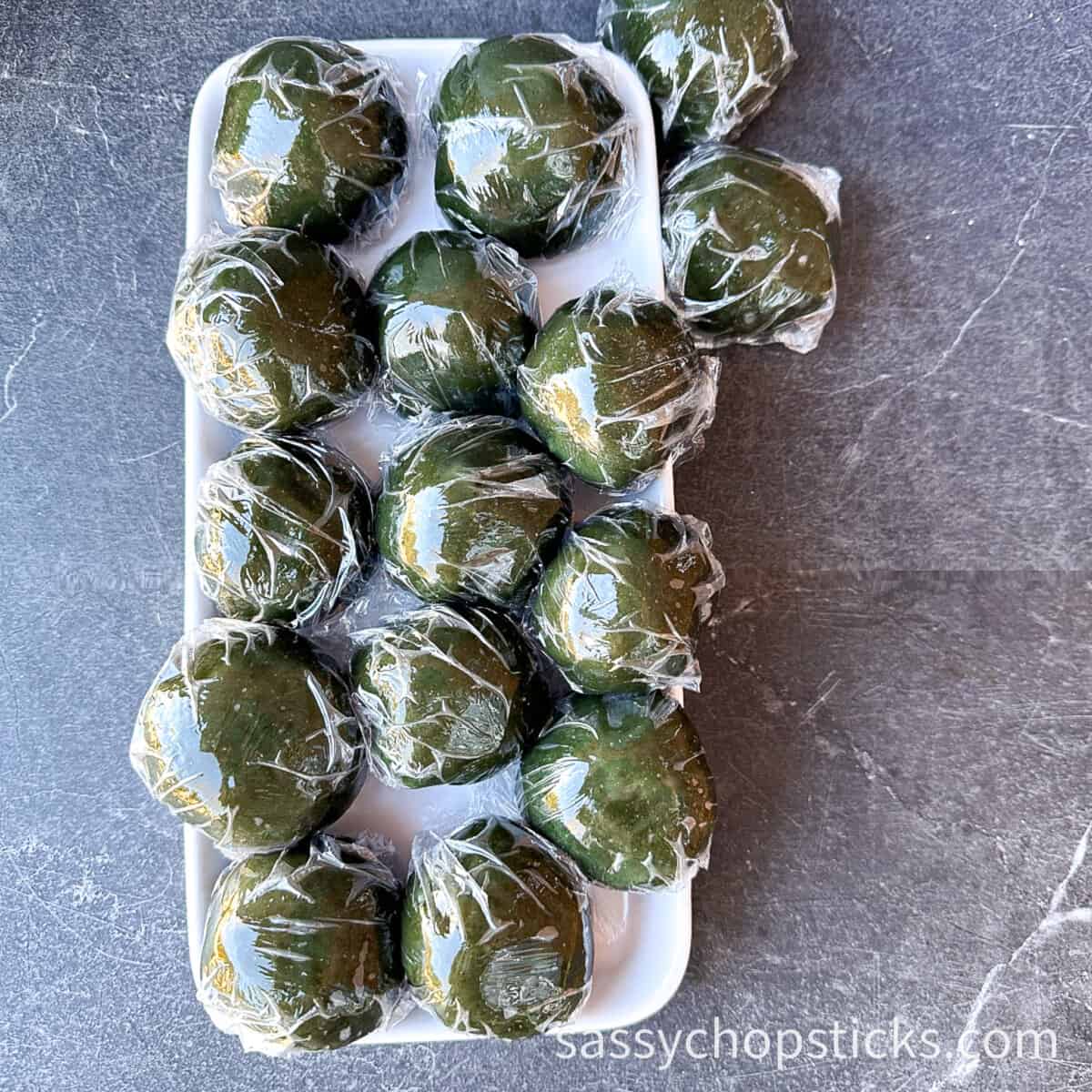
Final thoughts
Qingtuan is more than just a tasty treat – it's a cultural symbol of harmonious traditions in ancient times. If you’re looking for an interesting sweet snack, look no further than these sweet rice flour dumplings. Get creative and try out different types of fillings and combinations to discover your favorite qingtuan treats. I would love to hear from you; let me know how your Qingtuan turned out by leaving comments below!
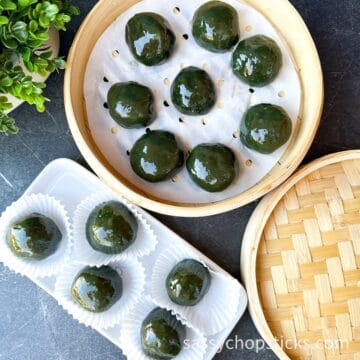
Qingtuan(青团): Traditional Chinese Mugwort Dumplings
Ingredients
For the dough:
- 2 cups and 4 tablespoons glutinous rice flour
- ⅔ cup rice flour
- 3 tablespoons sugar
- 3 tablespoons mugwort powder
- ⅔ cup cornstarch
- 2 tablespoons lard
- 2 cups hot water
Sesame seed and peanut filling:
- ½ cup black sesame seeds
- ½ cup roasted peanuts
- 1 tablespoon sugar
- ½ tablespoon lard
Red bean paste filling:
- 1 cup red bean paste
Instructions
- First, let's make sesame and peanut filling: add sesame seeds, peanuts, and sugar to a grinder and grind until powder forms. Then, add lard to the powder mixture. Now you have a freshly made paste! (If you are using red bean paste filling, you can skip this step)
- In a mixing bowl, combine the glutinous rice flour, rice flour, cornstarch, sugar, and mugwort powder.
- Gradually add hot water to the mixture while stirring continuously until a smooth dough forms.
- Knead the lard into the dough for a few minutes until it becomes elastic and pliable. Divide the dough into small portions and roll them into round balls.
- Flatten each ball into a disc shape with your palm, making a small well in the center for the filling.
- Place a small amount of sesame peanut filling or sweet red bean paste (about 1 teaspoon) onto the center of each dough disc. Carefully seal the edges of the dough around the filling, ensuring it's completely enclosed.
- Roll the filled dough between your palms to form a smooth ball shape.
- Arrange the qingtuan on a bamboo steamer lined with parchment paper, leaving some space between each piece to prevent sticking. Steam over high heat for 15-20 minutes until the qingtuan is cooked and slightly translucent.
- Once cooked, remove the qingtuan from the steamer and gently brush on a layer of oil. The oil keeps them from drying out and breaking. Enjoy!


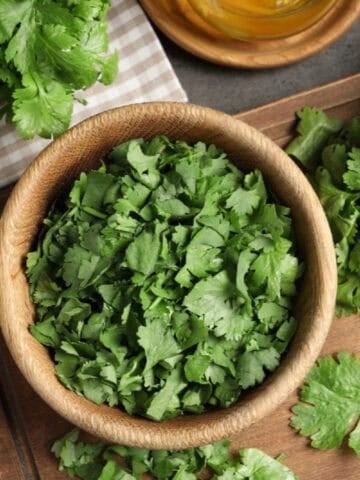
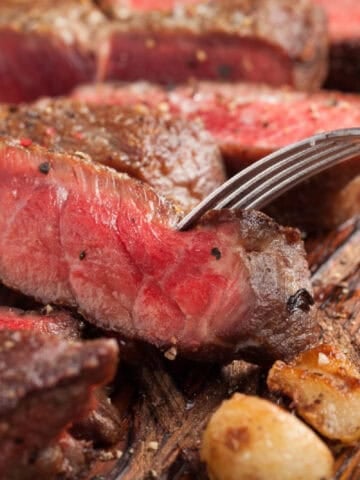
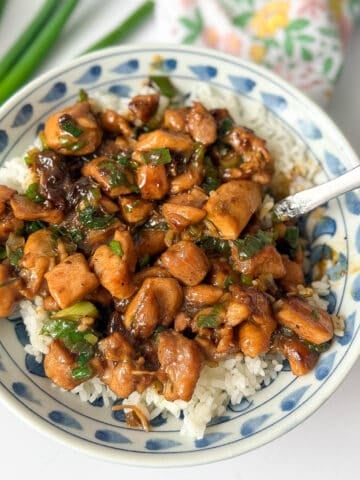
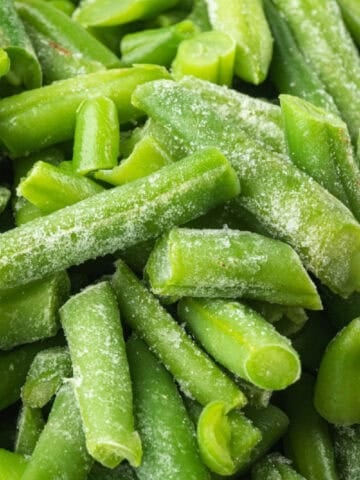
Sandhya Ramakrishnan says
So exciting to read about the culture behind a recipe. We make something similar in Indian cuisine and I have made regular Chinese savory dumplings. I can't wait to try these out. One question, where can I find mugwort powder?
Yuan says
Hi, Sandhya! You can get mugwort powder through Amazon.https://amzn.to/3HTaywm 🙂
Gloria says
What an interesting recipe. I love trying the flavors of the world right at home. We will have to add these to our Asian recipes.
Kathryn says
I've never heard of these but they sounds great. Love all of your recipes, can't wait to try more of them!
Leslie says
I have never heard of Qingtuan but I am so very intrigued by this recipe!
Elaine says
I love this recipe and will definitely give it a try this weekend! 🙂
Amy says
I have a personal chef client that loves Asian food so I made these for them as a treat. They loved them as did I.
Kim says
I have never heard of these - they look so pretty! Definitely something I will be trying out for an Asian dinner night.
andrea says
I've never tried these but they look really delicious. I want to make the ones with the peanut and sesame filling.
Jenny says
It is so nice to discover new lovely recipes. I had tried mugwort dumplings at a friend's house but never knew the recipe; this is it! Thank you!
Jennifer says
I can't tell you enough how much I enjoy your site. It has such great information. I love to visit because I always learn something new. I am a fan of Chinese cuisine, and I am also addicted to your recipes. The Qingtuan look lovely. Thanks so much for your recipes!